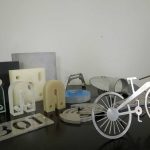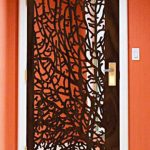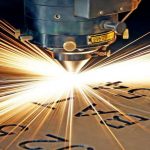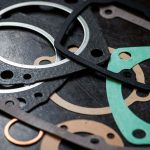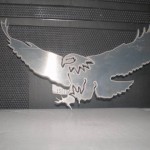 Waterjet Machining has been growing in last 2 decades. There are many reasons for this grow. But the they most important one is “versatility.”
Waterjet Machining has been growing in last 2 decades. There are many reasons for this grow. But the they most important one is “versatility.”
A waterjet is a versatile and flexible machining system. You can cut a wide variety of material efficiently and cost-effectively and can create a wide variety of parts.
Cut nearly any material
Because waterjets cut using water and abrasive, they can work with a wide variety of materials. These materials include:
- Copper, brass, aluminum
- Mild steel
- 304 Stainless Steel , 316 Stainless Steel
- Pre-hardened steel
- Exotic materials such as Hastalloy, Inconel and Titanium.
- Fragile Materials such as Glass, Ceramic, Quartz, Stone.
- Laminated material
- Flammable materials
- Fiberglass
- Rubber, Plastic, Nylon
One of the few materials that cannot be cut with a waterjet is tempered glass. Because tempered glass is under stress, as soon as you begin to cut it, it will shatter into small fragments—as it is designed to do.
Waterjet can cut tempered glass for designers, sign makers and other industries.
Fast setup and programming
The movement of the machining head is controlled by a computer, which greatly simplifies control of the waterjet. In most cases, “programming” a part means using a CAD program to draw the part. When you “Start,” the part is made by the waterjet machine. This approach also means that customers can create their own drawings and bring them to a waterjet machine for creation.
Little fixturing for most parts
Fixturing is generally a matter of weighing down the material by placing weights on it. Small parts might require tabs to prevent them from falling into the tank.
Almost no heat generated on your part
What little heat is generated by the waterjet is absorbed by the water and carried into the catch tank. The material itself experiences almost no change in temperature during machining.
The result is that there is no heat affected zone (HAZ) on the material. The absence of a HAZ means you can machine without hardening the material, generating poisonous fumes, recasting, or warping. As a plus, You can also machine parts that have already been heat treated.
No mechanical stresses
Waterjet machining does not introduce any stresses into the material.
Machining thick material
While most money will probably be made in thicknesses under 1″ (2.5 cm) for steel, it is common to machine up to 4″ (10 cm). The thicker the material, the longer it will take to cut. A part made from material twice as thick will take more than twice as long. Some companies make low tolerance parts out of metal that is up to 5″ to 10″ thick (12.5 cm-25 cm), but it takes a long time and tends to be an occasional operation.
Environmentally friendly
As long as you are not machining a material that is hazardous, the spent abrasive and waste material become suitable for land fill. The garnet abrasive is can be disposed of with your other trash.
This keeps the environmental impact relatively low, even if you do machine the occasional hazardous material.
Narrow kerf removes only a small amount of material
The amount of material removed by the waterjet stream is typically about 0.02″ (0.5 mm) wide, meaning that very little material is removed. When you are working with expensive material (such as Titanium) or hazardous material (such as lead), this can be a significant benefit. It also means that you can get more parts from a given sheet of material.
When machining or roughing out expensive materials such as titanium, your scrap still has value. This is because you get chunks, not chips.
